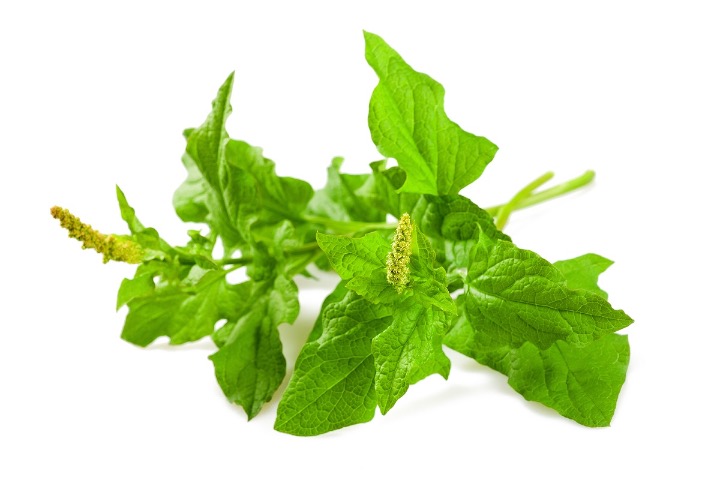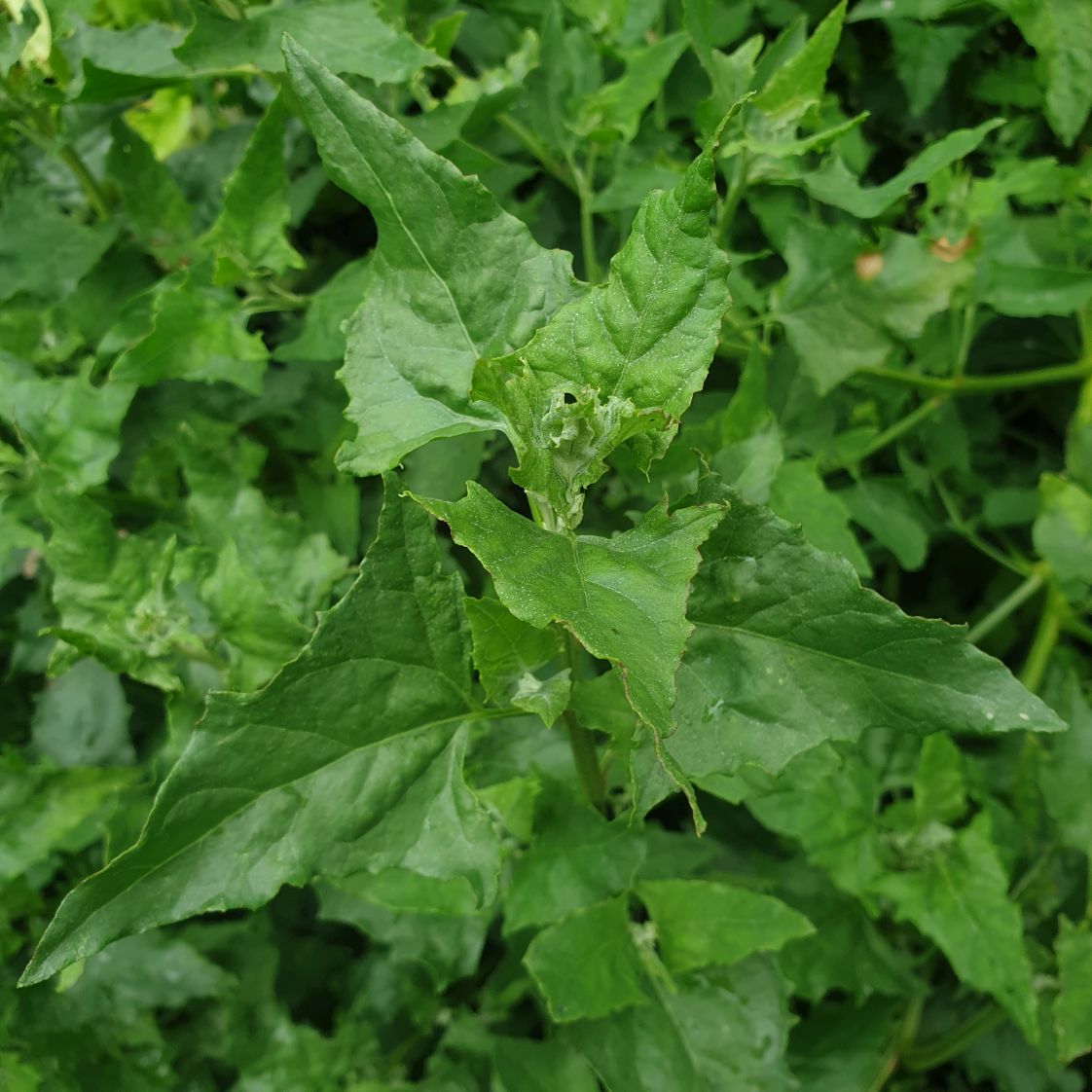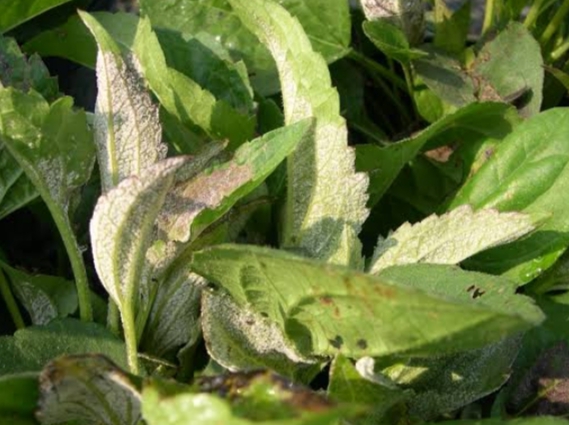Good King Henry Plant
Good King Henry, a perennial, prefers well-drained, fertile soil and partial shade to full sun. It's frost-tolerant and fast-growing.
Habit
Perennial
Height
0.3-0.5 m
Growth
Fast
Soil
Well-drained, loamy soil
Shade
Partial Shade to Full Sun
Moisture
Moist
Edible
Yes
Medicinal
Yes
Origin
Europe
Climatic Condition
Temperate
Temperature (°)
15-25°C
Humidity (%)
50-60%
Potting media
Loamy mix
Fertilizers
Nitrogen-rich
Watering
Water regularly, allow topsoil to dry between waterings
Plant Weight
0.3-0.5 kg
Flowering Time
Spring to Summer
Soil Ph level
6.0 - 7.0
Water Ph level
6.0 - 7.0
Soil EC
0.3 - 0.4
Yield Per Plant
N/A
NPK ratio
10:10:10
life Span
Perennial
Health Benefits
Edible greens, used in traditional medicinal practices.
Suggested Grow Media or Potting Mix ?
50% loam, 25% compost, 25% sand
Suggested Fertigation/Fertilizers
Fertilize every 6 weeks with a balanced fertilizer.
Common Diseases and Remedies
Powdery Mildew , Downy Mildew .
White coloured powdery masses on under surface of leaf , later it becomes black in colour .
Remove infected plant parts , Avoid overhead irrigation .
HEALTH BENEFITS
- Rich in vitamins and minerals: High in vitamin C, iron, and calcium.
- Digestive aid: Traditionally used as a mild laxative.
- Supports blood health: Iron-rich content helps with anemia.
What Is A Good King Henry Plant?
Good King Henry plant, also known as 'Chenopodium Bonus-henricus', is an ancient plant from Europe. It belongs to the same family as spinach and quinoa. It is valuable for its edible leaves, which taste similar to spinach and can be eaten raw or cooked.
What Are The Different Types of Good King Henry Plants?
1.Standard Green Variety:
The most common variety with green, triangular leaves on long stems.
2.Red-Stemmed Variety:
Some varieties have red or scarlet-red stems, which adds to the appearance of the plant.
3.Golden Leaf Varieties:
There are also varieties with yellow or yellow leaves that are eye-catching in the garden.
4.Variegated variety:
The leaves of the variegated variety have spots of different colours, usually green, white or sweet.
5.Compact Varieties:
Some varieties are bred for a more compact growth habit, making them suitable for small gardens or containers.

How to take care of good King Henry?
1.Location:
Good King Henry prefers a location in full sun or partial shade in well-drained soil. It tolerates many soil types but thrives in rich, moist soils.
2. Sunshine:
Good care for King Henry, prefers full sun to partial shade. Make sure you get at least 6 hours of sunlight every day.
3.Soil:
Provide fertile, well-drained loamy soil. Sandy or clay soil should be amended with organic matter such as compost to improve moisture and nutrient content. Maintain slightly acidic to neutral soil pH preferably between 6.0 and 7.0. If necessary, you can adjust the pH by adding lime to raise the pH or sulfur to lower the pH.
4. Hydration:
A good King Henry plant should be watered regularly, especially in drought or hot weather. Keep the soil moist at all times but not waterlogged. Apply a layer of organic mulch, such as straw or compost, around the base of the plant. Mulch helps retain moisture, reduces evaporation and suppresses weeds.

5.Nourshiment:
Good King Henry, also known as 'Blitum Bonus-henricus' or 'Chenopodium Bonus-henricus', is a green vegetable similar to spinach. Good King Henry prefers well-drained soil and partial shade to full sun. Sow the seeds or seedlings in early spring or late summer.Good King Henry does not need heavy fertilization. Adding compost or organic matter to the soil before planting will provide adequate nutrients. Apply a layer of mulch around plants to retain moisture and reduce weeds.
6.Issues:
Choose a location with good soil and full or partial sun. Sow the seeds or seedlings in early spring or late summer. Keep soil moist but not waterlogged. Water regularly, especially during the dry season.Good King Henry generally does not need heavy fertilization. You can mix organic matter into the soil before planting or use a balanced fertilizer throughout the growing season.
What Are The Benefits of Good King Henry plant?
Good King Henry, also known as 'Blitum Bonus-henricus' or 'Chenopodium Bonus-henricus', is an evergreen perennial. Nutritional value , Easy to Grow , Perennial Growth, Cold Hardiness, Edible Leaves

FAQ's About Growing Good King Henry
1.How to maintain good king henry plant?
Provide approximately 4-6 hours of full sun, preferably partial shade, per day. Keep soil moist but not waterlogged. Water when the soil surface is dry. Plant in well-drained soil containing good organic matter.To promote good growth, apply fertilizer evenly throughout the growing season (spring and summer).Use mulch around the base of plants to retain moisture and reduce weeds. Regular removal of dead or damaged leaves and stems to stimulate new growth and maintain plant health. If the plant grows tall and falls easily, provide support such as stakes or trellises.
2.What are the uses of good king henry plant?
Edible Greens
Nutritional value
Historical Uses.
Medicinal Uses
Ornamental Plants
3.Can I grow a good King Henry plant at home?
Good King Henry (Chenopodium Bonus-henricus) can be grown indoors, but good conditions are important. Make sure your indoor space gets enough sunlight or use grow lights to simulate sunlight. Also provide consistent water and well-drained soil. While this is possible, keep in mind that growing indoors will not yield as much as growing outdoors due to limited space and lighting.
4.Which pot is best for growing good king henry plant in india?
To grow King Henry in India well, consider using a good pot that is at least 12 inches deep and 12-18 inches in diameter. Terracotta pots are a good choice because they provide good air circulation and moisture control. Make sure there is drainage at the bottom of the pot to prevent water from overflowing. Also consider placing the pot in a location that receives partial sun and is well ventilated.
5.How do you propagate good king henry plant either from seeds or cutting
Good King Henry (Chenopodium Bonus-henricus) can be propagated from seeds and cuttings .Sow seeds directly into well-drained soil in spring or late summer/autumn.Once the seedlings have developed a few true leaves, separate the seedlings to ensure proper spacing.
